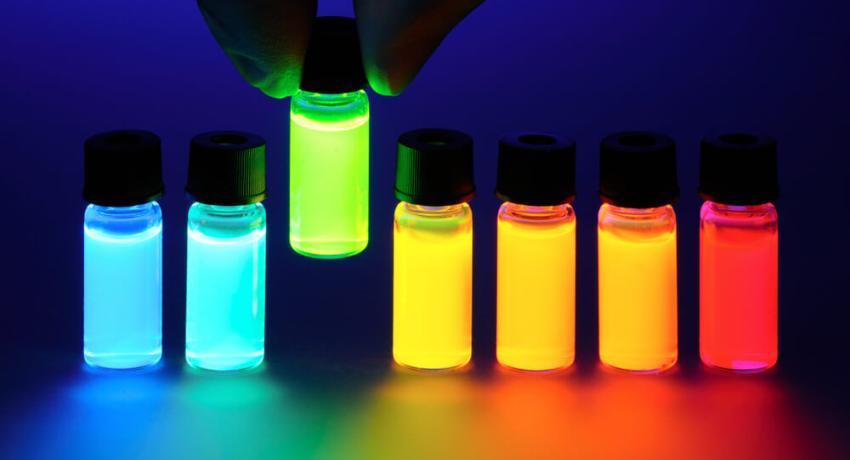When a substance absorbs light or other electromagnetic radiation, it can re-emit light at a longer wavelength. The emitted light is called fluorescence by measuring the intensity and wavelength distribution of the fluorescence, we can gain valuable information about the molecular environment, structure, and dynamics of the sample.

- Liquids and films with angle resolved sampler holder
- Powders, liquids, and films with an integrating sphere
- Excitation range: 200 - 1250nm
- Emission: 250 - 800nm and 1750 - 5000nm with InSb detector
- Wavelength accuracy: +/- 0.3nm
- Minimum step size: 0.01nm (grating dependent)
-
Polarizer
Materials and applications for which PLQY are Important Parameters
- Photovoltaics (PV) and solar cells
- Novel nanomaterials
- Nanoparticles
- Quantum dots
- Graphene/single walled carbon nanotubes
- New fluorescent probes
- Biomarkers and biosensors
- Lighting and display materials (OLED, LED, and phosphors)
- Thin films and coatings
- Light emitting devices
- Cured/doped polymers, gels, hydrogels
- Paints and coatings
- Rare earth materials

